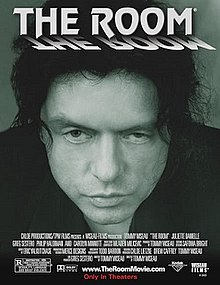-
Posts
2,505 -
Joined
-
Last visited
Content Type
Profiles
Forums
Character Archive
Frequently Asked Questions
Equestrian Empire Character Archive
Golden Oaks Memorial Library
Pony Roleplay Characters
Events
Blogs
Everything posted by Rebel the Wolfgirl
-
Idea for the worldbuilding in The Madman Laughs in a Glass Coffin: The Simpsons ends at Season 11 or 12 in the Roger Rabbitverse, based on the line in "Behind the Laughter" from Homer assuring that "the next season will be the last". So it ends around 2000-2001. So by the time of the story, the Simpsons have settled into (relatively) normal lives - Homer, for instance, continues his stint as a character actor in theater (taken from "Behind the Laughter") while starting to go into the resturaunt business with Moe, Bart is dating Sakura Haruno (taken from TV Tropes' image for "Crossover Ship", which itself is taken from a Nick Magazine article), Marge is doing talk shows, Lisa (still) becomes Buddhist (albeit since "She of Little Faith" doesn't exist in this universe, it's due to two factors - exploring Eastern philosophy and religion 'behind the scenes', and dating Naruto Uzumaki - an idea lifted from the same Nick Mag article that spawned "Bartkura"), and Maggie's attempting to break into the "throwback" genre, specifically in attempting to emulate Golden Age cartoons. These details are to a degree important, as it's in Homer and Moe's restaurant that Rarity and Azula have their first (violent) confrontation - one big shout out to "Pulp Fiction"; primarily drawing from the "Jackrabbit Slim's" scene and the diner scenes from the beginning and end of the movie...though this scene doesn't end as peacefully. There's also a smidge of the iconic "hamburger" bit when Azula orders a "Good Morning Burger" (itself a reference to the Simpsons episode "Bart's Friend Falls in Love") - an 18-ounce ground beef patty soaked in butter, with bacon, ham, and a fried egg on top. Azula orders it (with cheese) and eats it slowly, deliberately, and with her mouth open in order to intimidate Rarity. Also, as a Tarantino pastiche, the fic has Retro Universe trappings - for instance, Winston cigarettes (famously peddled by the Flintstones) are still in production; Azula smokes them and tends to quote the "Winston tastes good like a cigarette should" jingle quite a few times.
-
So I've started working on the finer details of the Vanilla Rum fic - it's set around somewhere between early-to-middle Season 8 - as evidenced when Vanilla Rum (inaccurately, but reasonably) believes Neighsay is part of the Princess assassination plot due to his opposition to the School of Friendship, later encountering someone intending to enroll in the "new" Friendship University; Vanilla has had experience with the Flim Flam Brothers, and correctly guesses it's a scam.
-
I oughta parody "good ol' boy" country music and all its pervasive stereotypes by writing about the single most MURICAN thing I can think of - a barbeque bacon double cheeseburger, fries, and root beer.
-
Song idea sketch: a love song focused around Princess Cadence...written in the style of Frank Zappa.
-
So, I'm officially starting on a new story - an MLP fic in the style of the Coen Brothers (more specifically their takes on the noir genre like Fargo and The Big Lebowski). My main protagonist is a mare named Vanilla Rum - she fancies herself as the best private investigator in Canterlot when the truth is she's hard-drinking, promiscuous and none-too-bright. So when a low-ranking noblestallion hires her to investigate his wife (whom he suspects is having an illicit tryst with their butler), Vanilla quickly finds herself in over her head as she stumbles upon a web of intrigue and revolution...oh, and a conspiracy to kill all four Princesses. So long as she gets paid, she's on the case!







